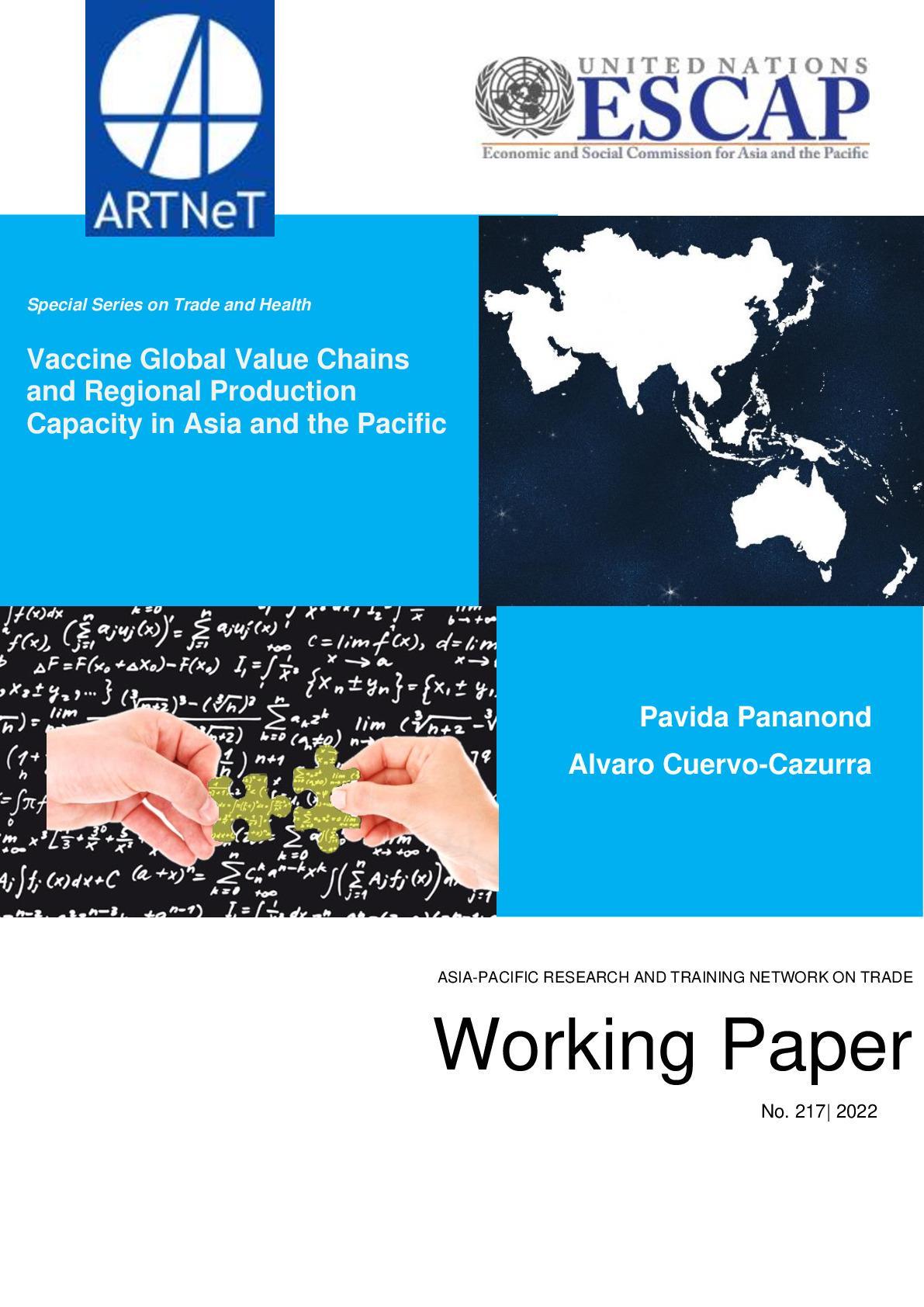Vaccine Global Value Chains and Regional Production Capacity in Asia and the Pacific

The coronavirus disease (COVID-19) pandemic has highlighted the crucial role of vaccines in public health management and economic recovery. Its worldwide impact has raised national security concerns and implications on health policies, particularly on Asia Pacific countries’ readiness to cope with the next pandemic. This report explains the rise of COVID-19 vaccine production of key vaccines and differentiates them into two different approaches: the internalization-driven production, in which the leading pharmaceutical multinationals control most of the vaccine production in a few locations; and the externalization-driven production, whereby lead companies extend their vaccine production to various regions. These two approaches are led by various factors, including vaccine technology, strategy and missions of the vaccine producers, and the availability and capacity of qualified contract manufacturers in host countries. Pros and cons for each approach need to be considered to limit the impact of nationalistic interests and policies that have been part of the delay in vaccine distribution in some countries. The ultimate objective of a vaccine policy is a speedy and efficient administration of vaccines in the population, not national production, even if the latter is a desirable goal for politicians.
